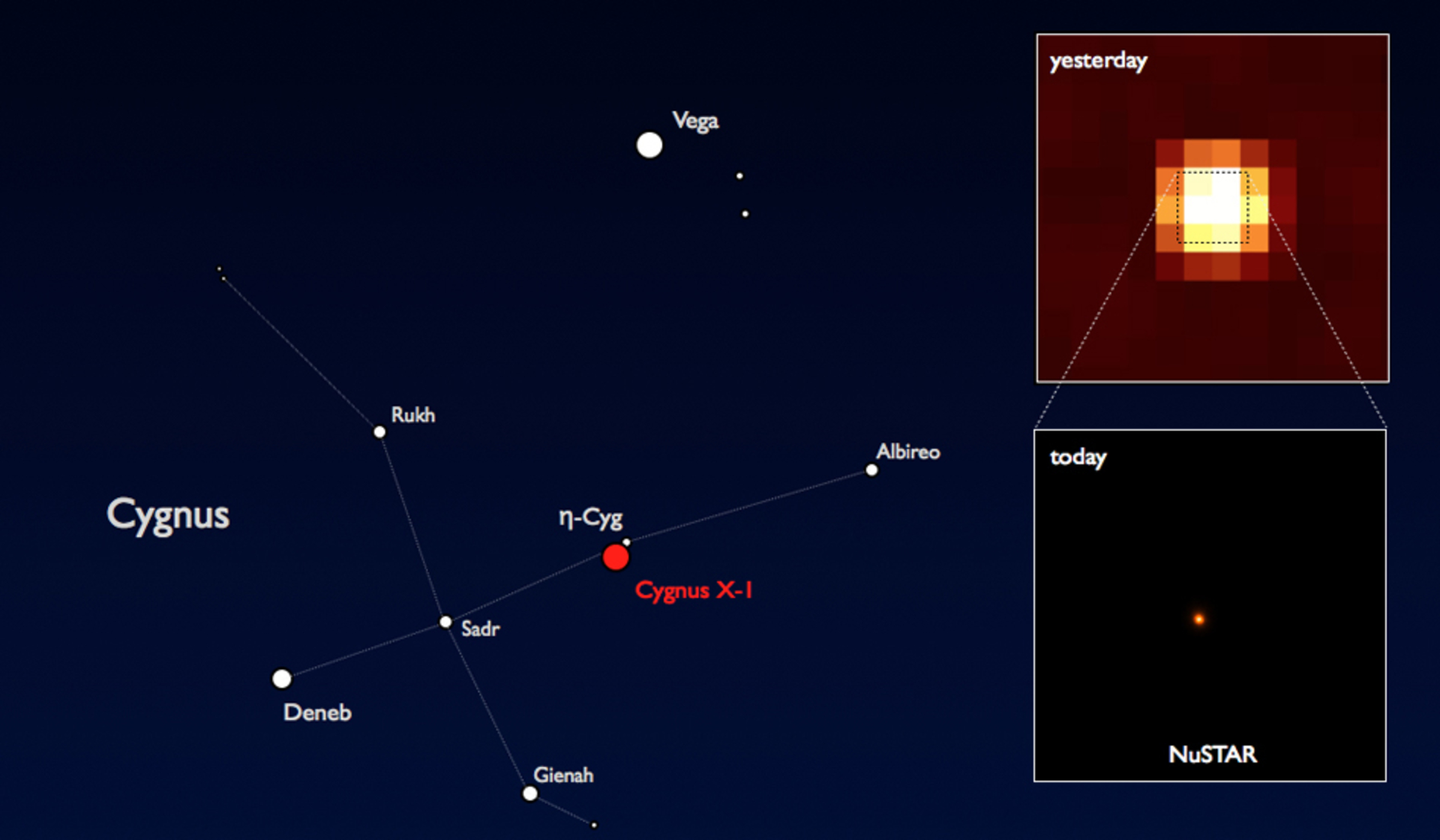
Space Telescope Opens Its X-Ray Eyes
Article
|
nustar120628

PASADENA, Calif. -- NASA's Nuclear Spectroscopic Telescope Array, or NuSTAR, has snapped its first test images of the sizzling high-energy X-ray universe. The observatory, launched June 13, is the first space telescope with the ability to focus high-energy X-rays, the same kind used by doctors and dentists, into crisp images.
Soon, the mission will begin its exploration of hidden black holes; fiery cinder balls left over from star explosions; and other sites of extreme physics in our cosmos.
"Today, we obtained the first-ever focused images of the high-energy X-ray universe," said Fiona Harrison, the mission's principal investigator at the California Institute of Technology in Pasadena, who first conceived of NuSTAR about 15 years ago. "It's like putting on a new pair of glasses and seeing aspects of the world around us clearly for the first time."
NuSTAR's lengthy mast, which provides the telescope mirrors and detectors with the distance needed to focus X-rays, was deployed on June 21. The NuSTAR team spent the next week verifying the pointing and motion capabilities of the satellite, and fine-tuning the alignment of the mast.
The first images from the observatory show Cygnus X-1, a black hole in our galaxy that is siphoning gas off a giant-star companion. This particular black hole was chosen as a first target because it is extremely bright in X-rays, allowing the NuSTAR team to easily see where the telescope's focused X-rays are falling on the detectors.
In the next two weeks, the team will point at two other bright calibration targets: G21.5-0.9, the remnant of a supernova explosion that occurred several thousand years ago in our own Milky Way galaxy; and 3C273, an actively feeding black hole, or quasar, located 2 billion light-years away at the center of another galaxy. These targets will be used to make a small adjustment to place the X-ray light at the optimum spot on the detector, and to further calibrate and understand the telescope in preparation for future science observations.
Other telescopes, including NASA's Swift and Chandra space telescopes, and the European Space Agency's XMM-Newton, will look at 3C273 in coordination with NuSTAR, helping to further calibrate the telescope.
The mission's primary observing program is expected to commence within two weeks.
"This is a really exciting time for the team," said Daniel Stern, the NuSTAR project scientist at NASA's Jet Propulsion Laboratory in Pasadena, Calif. "We can already see the power of NuSTAR to crack open the high-energy X-ray universe and reveal secrets that were impossible to get at before."
Throughout its two-year prime mission, NuSTAR will turn its focused gaze on the most energetic objects in the universe, producing images with 100 times the sensitivity and 10 times the resolution of its predecessors operating at similar wavelength ranges. It will take a census of black holes both inside and outside of our Milky Way galaxy, and answer questions about how this enigmatic cosmic "species" behaves and evolves. Because it sees high-energy X-rays, NuSTAR will also probe farther into the dynamic regions around black holes, where matter is heated to temperatures as high as hundreds of millions of degrees, and will measure how fast black holes are spinning.
Other targets for the mission include the burnt-out remains of dead stars, such as those that exploded as supernovae; high-speed jets; the temperamental surface of our sun; and the structures where galaxies cluster together like mega-cities.
NuSTAR is a Small Explorer mission led by Caltech and managed by JPL for NASA's Science Mission Directorate in Washington. The spacecraft was built by Orbital Sciences Corporation, Dulles, Va. Its instrument was built by a consortium including Caltech; JPL; the University of California, Berkeley; Columbia University, New York; NASA's Goddard Space Flight Center, Greenbelt, Md.; the Danish Technical University in Denmark; Lawrence Livermore National Laboratory, Livermore, Calif.; and ATK Aerospace Systems, Goleta, Calif. NuSTAR will be operated by UC Berkeley, with the Italian Space Agency providing its equatorial ground station located at Malindi, Kenya. The mission's outreach program is based at Sonoma State University, Rohnert Park, Calif. NASA's Explorer Program is managed by Goddard. JPL is managed by Caltech for NASA.